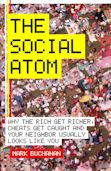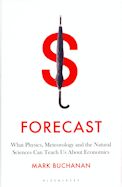What was the cause of the First World War? Every historian can explain it, yet they all have different theories, and no-one predicted it. Buchanan starts with this observation, and proposes that history is in fact the manifestation of a complex adaptive system. In this lucid account, he explains the ubiquitous physical principles behind avalanches, earthquakes, species extinctions, magnetism, forest fires, the stock market, economic webs, scientific revolutions, and, ultimately, history. Admittedly the explanations of the latter processes are more speculative than of the former, but there is evidence, and the underlying theme of self-organising critical systems shines through the discussion.
An important property of such systems is that events of all sizes share the same cause. Thus large events, like big earthquakes, mass extinctions, or spectacular stock market crashes, need no special explanations. A small "cause" can have an effect on any size scale, depending only on the length of the "finger of instability" where it occurs, which itself depends on the current poised state of the global system. Thus such large events essentially unpredictable (although certain kinds of statistical predictions can be made). And attempts to prevent the large events can even push the system into a super-critical state, just making things worse. (This may be the reason behind some recent devastating forest fires, caused by a policy of rigorously putting out smaller fires, building up the tinder, until the system was just "an accident waiting to happen".) This does suggest that different kinds of intervention might be able to keep the system in a sub-critical state, with only smaller events occurring, but Buchanan does not discuss this. (Depressingly, accepting a constant low level of instability in order to prevent the occasional disaster may also be difficult to achieve politically.)
All in all, this is a well written and well explained account of critical systems. Economic and political planners would do well to digest the conclusions (although that might well put them out of their jobs).



